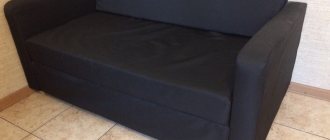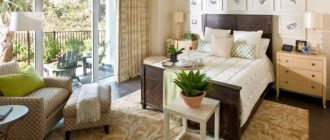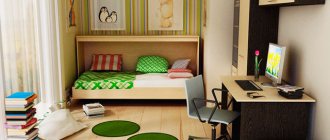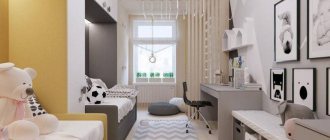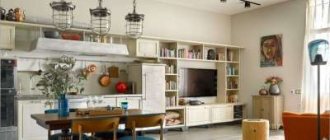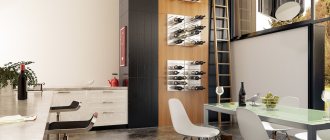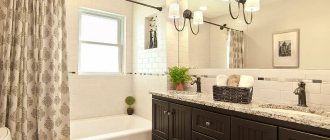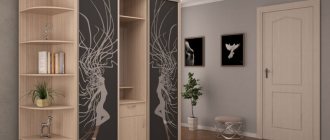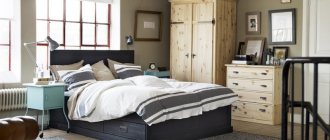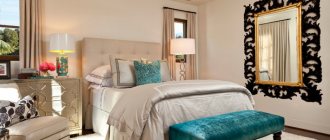Even in the largest apartment, rational storage organization makes life much easier for the owners. When utensils, furnishings, books and electrical appliances are in their place, they are very easy to find. But if there are a lot of things, then in addition to ordinary cabinets and cabinets, shelves will be a real salvation.
A correctly chosen shelf will decorate the interior and give it a complete look. It is worth taking care not only of the aesthetics of the product, but also of the technical parameters. Any shelf must be securely fixed to the wall and withstand the weight of the objects placed on it. All this is ensured by the selection of special fastening elements - brackets for the shelf.
What types of brackets are there?
Shelf brackets vary in shape, material, style and maximum load. Photos of shelf brackets, which can be found in hardware catalogs or on the Internet, allow us to distinguish 3 main forms:
Corner bracket. One of the easiest ways to attach a shelf. Structurally, it consists of two planks connected by a rib or jumper for greater rigidity. The vertical strip is used to attach the support to the wall, and the horizontal part is used to mount the shelf itself.
Rectangular brackets. The method of fixing to the wall is similar to the previous one. A distinctive feature is that the bracket allows you to install 2 shelves under each other at once.
Pelican type mount. The support got its name due to the similarity of the lower part with the beak of a bird. Most often used as a bracket for glass shelves. But it can also be found paired with a shelf made of chipboard or metal.
This type of shelf holder has a collapsible design, dividing the device into moving and fixed parts, a screw pair and a seal. The fixed part is attached to the wall; a pressing element with a rubber or silicone gasket is inserted on top. The shelf is clamped between the two parts using a screw.
Most models can withstand loads of up to 30 kg. At home, it is very rare that the weight of a shelf with its contents exceeds this figure. But for warehouses or retail outlets, it makes more sense to secure shelves using reinforced shelf brackets.
Increased thickness (from 3 mm or more), the addition of additional stops and ribs make the element durable. It can withstand significant loads without deforming.
Hidden hidden fasteners for shelves to the wall
The effect of furniture floating, without floor supports, is also maintained in the design of wall shelves. At the same time, it must be “thick” so that hidden fasteners to the wall can be hidden inside the thickness. There are many options for hidden fastenings for shelves to the wall. Conventionally, they can be divided into two groups: “frames” and “pins”. In the first case, a flat frame structure serves as the basis for fastening the shelf, in the second - special hidden mensol holders, which are pins with wall mounting.
Inner frame
Invisible fasteners for shelves to the wall are placed inside the cavity of the shelf itself. It is a frame with partitions made of thin timber, plywood or metal. The thin lining of such a shelf is painted in the desired color.
In general, this option for hidden fasteners for a wall shelf is more of a decorative nature. It’s not worth putting something heavy on such a shelf.
Hidden mensolo holders
It is more reliable to attach a bookshelf to the wall using mensol holders, which combine an anchor and a pin in their design.
Another practical option for hidden shelf fastening is a plate on anchors with welded pins for “stringing” the shelf.
There are other types of hidden pin holders with the same installation principle. For fastening glass shelves, options are available with special rubberized rings to prevent the glass surface from sliding on the metal. True, such shelf fastening cannot be called hidden - after all, it “lies” on top.
Bracket material
- metal or alloy (steel, aluminum, bronze, cast iron);
- natural solid wood, chipboard, MDF;
- gypsum.
From an operational point of view, a metal shelf bracket is an ideal choice. When choosing it, you can find strict, laconic models in the spirit of minimalism or elaborate forged supports. The latter will fit perfectly into fusion, gothic or rococo style. Although forging is becoming less and less common in interiors due to its high cost, a shelf with ornate supports will become the highlight of a living room or hallway.
For classic room design, plaster holders are recommended. They can be standard white or gold plated. Ceramic figurines, porcelain sets and elegant vases look harmonious on such shelves. There is no need to worry about the load-bearing capacity of the stucco molding: it is all reinforced with metal fittings.
For connoisseurs of country, shabby chic or Provence style, wooden brackets are suitable. The winning option is intentionally aged wood with a rough natural texture or painted to match the interior.
Hidden bracket
Here the shelf is held on the wall by a long, metal lever that fits inside the material of the structure. This lever is attached to the wall using a plate that is screwed using self-tapping screws. The plate is completely hidden under the shelf.
The main advantage of this type of metal shelf brackets is their invisibility. The shelves seem weightless, as if floating in the air.
These brackets are suitable for minimalist modern interiors or for traditional Japanese style designs.
Choosing the right bracket
To ensure that your purchase does not disappoint, you need to find out in advance which bracket is best to choose. Some practical tips:
A high-quality shelf holder always comes with a manufacturer’s warranty card with the specified characteristics and maximum load. It would be a good idea to ask the seller about the possibility of replacing or returning an unsuitable product.
Before making a purchase, be sure to check the complete set of the bracket: in addition to the product itself, the composition must include the appropriate fasteners. Thus, manufacturers of shelf brackets complete corner models with four self-tapping screws and two dowels.
If for some reason the kit does not contain a self-tapping screw, you should purchase it yourself. The diameter and length of the hardware depend on the wall material (plasterboard, concrete or brick) and the load.
The free end of the shelf (console) should not protrude beyond the brackets by more than 10 cm. It is optimal if the length of the supporting part of the bracket is 2/3 of the total width of the shelf.
Don't forget about the decorative value of the shelf bracket. You can opt for hidden modifications that give the shelf weightlessness and lightness. Or you can go the other way - and choose a massive holder, making it a full-fledged element of the interior.
Choosing accessories for fastening shelves
The choice of one or another fitting depends on the level of workload of the structure and the aesthetic requirements for a given shelf, but first, let’s figure out what shelves in cabinets are made of in general.
Types of materials used to make shelves
| Illustrations | Recommendations |
| Tree . Shelves made of natural wood are considered a symbol of environmental purity; they are strong and durable. But type-setting wooden panels are quite bulky. In addition to their direct purpose, such shelves in open shelving also carry a serious decorative load. | |
| laminated chipboard. Laminated chipboards are the most affordable material for making furniture. The minimum thickness of laminated chipboard furniture boards is 16 mm. Typically, the width of a solid shelf made of chipboard does not exceed 70 cm. The strength of the material is not high, so it is not recommended to install holders with internal inserts, since the sheet delaminates when the vertical load increases. | |
| MDF . Environmentally friendly and durable material. The thickness of furniture MDF starts from 16 mm. The strength of these boards is higher than that of their chipboard counterparts. | |
| Plywood . Glued wood veneer is highly durable. Shelves in cabinets up to 60 cm in size can be made from 8 mm thick plywood. But plywood is installed only on supporting fasteners; cutting into the end of the sheet is not advisable. | |
| Furniture board . The furniture panel is assembled from wooden planks, after which the slab is covered with veneer. Visually, the product resembles a natural wooden board. The material is universal, any mount can be mounted under it. | |
| Metal. Metal shelves are the most durable. Solid sheet metal for the manufacture of such structures is used only when assembling iron cabinets for technical needs. In household furniture, mesh shelves are made from metal, for example, for shoes. | |
| Glass. The load-bearing capacity of the glass leaves much to be desired, but the appearance is quite original. Most often, racks for dishes are made of glass, but again, the dishes should not be heavy; the maximum that a glass shelf can support are saucers, cups, or thin-walled glasses. In addition, glass is popular when arranging display cabinets; it is transparent and does not interfere with the view of the items on the display. By the way, when installing glass shelves, the doors in the cabinet are also made of glass or with glass inserts. |
Types of shelves depending on the method of their fastening
There are 3 main groups of cabinet shelves:
- Stationary shelves - in this niche there are overhead planes and panels firmly attached to the base. During operation, the structure does not move.
There are stationary shelves in all cabinets.
- Drawer designs are essentially the same drawers, only without side walls. They are convenient to use, but such accessories are expensive.
Retractable structures appeared relatively recently.
- Rotating designs - round shelves mounted on a central rotating stand are quite convenient, but a specific round design is not suitable for every cabinet; too much useful space is wasted.
Rotating shelves are easy to use and have an original appearance.
Accessories for stationary shelves
All types of fittings described above, namely, eccentrics, conical holders, corners, etc. originally developed for arranging stationary shelves. In addition to them, there are also so-called overhead holders. There are hundreds of models of such holders, but the meaning is the same - the stops are attached to the walls of the cabinet and a shield is placed on them.
Overhead holders are considered the simplest designs.
Installation of overhead shelf holders
In theory, there is nothing complicated in installing overhead shelf holders. You need to use a level to mark the side racks of the cabinet, screw the stops to them and place the shield on these stops. Most often, overhead brackets are attached with self-tapping screws.
Overhead shelf holders are firmly attached to the cabinet walls.
Installation of mortise shelf holders
If you do not take into account the eccentrics, as well as screw and conical couplers, then the easiest installation method will be to insert a regular pin into a pre-drilled blind hole. The stop can be metal or plastic. Some home craftsmen insert wooden dowels as stops.
Installation diagram of a hidden mortise shelf holder.
Accessories for pull-out shelves
As already mentioned, the same fittings are used here as for the drawers. There are 2 types of structures:
- Roller mechanism - in such designs, plastic rollers are used as the main sliding element. In this case, reliability depends on the manufacturer’s brand.
Roller guides have an affordable price.
- Steel hinges - steel balls are used as the main sliding element in such guides. Compared to the previous version, ball guides are much more reliable, but more expensive.
The service life of guides with steel balls reaches up to 50 years.
Installation of retractable fittings
| Illustrations | Recommendations |
| Stage 1. We screw the guides to the end of the retractable shield.
| |
| Stage 2 . We mark and also screw the counter strips of the sliding mechanisms to the side walls of the cabinet with self-tapping screws. | |
| Stage 3 . We insert the shelf into the guides and use it. |
Accessories for rotating shelves
Despite the relatively large dimensions and original appearance, such designs are extremely simple. They are sold as a set, which includes:
- A central rack with shelves or baskets installed on it; by the way, baskets and shelves can be removable.
- Two flanges are hinge mechanisms, between which a rack with shelves is mounted; the flanges are designed to hold and ensure rotation of the structure.
All rotating shelves are sold as a set.
Installation of a rotating shelf
There is nothing complicated in installing a rotating structure, the algorithm is as follows:
- Find the center of the niche and screw the top flange onto the screws.
- Using a plumb line, mark the mounting point of the lower flange and also screw it in with self-tapping screws.
- Insert a rack with shelves between the flanges and secure it with fasteners.
The rotating shelf is mounted using 2 flanges.
